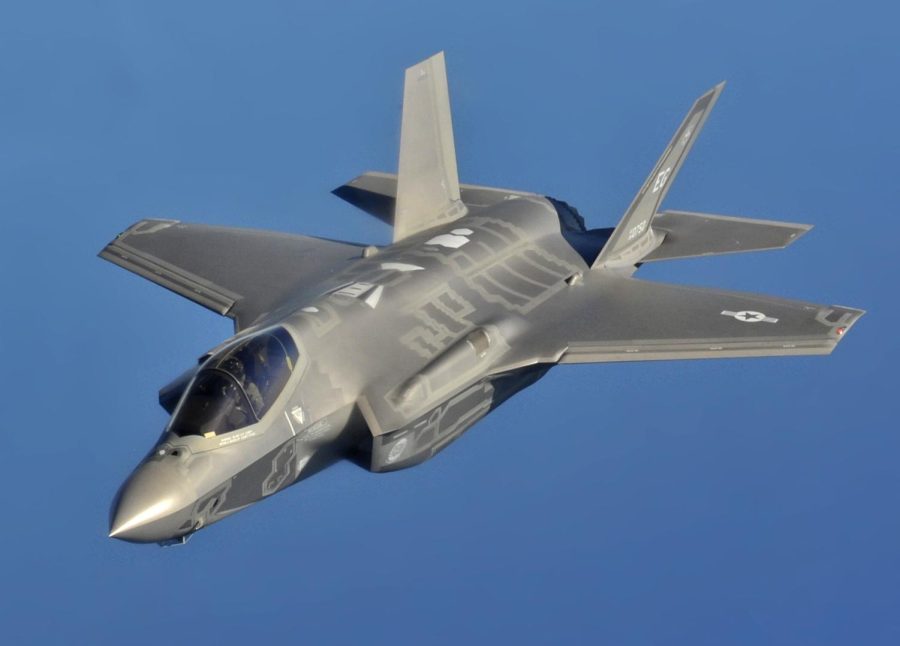America’s (in)famous jet
The cost of the F-35 and why it matters
After World War Two America found itself in an arms race; since then America’s approach has remained the same. The central American military strategy is to have weapon systems better than those of Russia or China, and a $786 plus billion budget to prove it. There is no better example of this than the infamous F-35 Lightning II. Expensive, flawed, yet deadly it represents both the pros and cons of American philosophy. With an expected R&D cost of $1.7 trillion, what might seem like a niche project is actually critical to the taxpayer. With all this one might assume the F-35 would be incredibly unpopular yet with nicknames like Panther and Velicoraptor given by those who fly it, at least some of the money must be worth it, right?
As geopolitical intentions rise, allies in Europe depend on the F-35 being built to defend them in a worst-case conventional World War 3. The plane has made headlines again and again while Russia has built up forces in Ukraine. While it simply might just be a scare tactic, NATO has to assume otherwise. Despite what one may think even in open conflict between the US and Russia, nuclear holocaust is incredibly unlikely due to Mutually Assured Destruction. As such the US must be ready for conventional war. If to not to both validate the concept of the F-35 and add to its importance, earlier this year in July the Russians unveiled their equivalent of the F-35.
Arguably the Cold War never ended; some say the end of the USSR simply marked a change in it. While the US has certainly done next to nothing to alleviate this problem, pacifism will not help under the current international geopolitical climate. According to this New York Times report China has plans to build more nuclear weapons and cutting edge methods of delivery. These intentions are exactly those that defined the early Cold War and the transition from bombs to missiles. Offensive moves like these means the US must be up to spec to deal with any threat
The F-35 is simply too big to give up on, the economic repercussions of letting go of 1.7 trillion USD spent would hit every American albeit a relatively minor one overall. The US is also tied in the deliveries of F-35’s to foreign countries and will fill a major gap of stealth planes in NATO.
A large reason for scrutiny and why the program has cost so much is that the F-35 has a lot of issues that make it in some ways still only a prototype. Cracks in the airframe when the internal gun of the F-35A is fired, erratic engine reliability, and the effects of water on the plane’s stealth coating combine to an aircraft that eats up unnecessary money better spent on other things.
However, letting planes such as the F-35 sit and deteriorate would mean that if they actually are needed they would not be ready in time. It is also the case that these planes are not designed to sit mothballed for long periods of time if they want to be used again. If it were possible to get rid of the F-35, it would have happened a long time ago.

Hello, my name is Henry Golbitz although I mainly go by Harry. I am currently a Junior at Triton Regional High School. As per the average teenager, I have...


